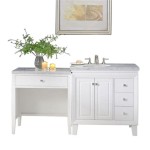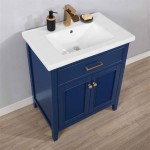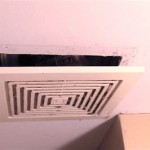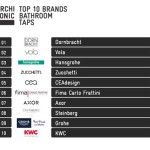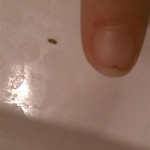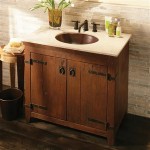How to Remove Rust Stains From Bathroom Tiles
Rust stains on bathroom tiles are a common problem, especially in areas with hard water or older plumbing. These stains, often a reddish-brown or orange color, are caused by iron oxide, which forms when iron reacts with oxygen and moisture. While rust is not harmful to the tiles themselves, it can be unsightly and difficult to remove, detracting from the overall cleanliness and aesthetics of the bathroom. Effective rust stain removal requires understanding the nature of the stain and applying the appropriate cleaning methods.
The effectiveness of a rust removal method depends on several factors, including the type of tile, the severity of the stain, and the duration the stain has been present. Porous tiles, such as natural stone, are more susceptible to staining and may require gentler, specialized cleaning solutions. Conversely, non-porous tiles like porcelain or ceramic are generally more resistant to staining and can tolerate more aggressive cleaning methods. Identifying the type of tile is crucial to avoid damage during the cleaning process.
Prevention is always better than cure. Addressing the source of the rust is the first step in preventing future staining. Leaky faucets, dripping showerheads, and rusty metal fixtures are common culprits. Repairing these problems will significantly reduce the likelihood of rust stains recurring. Additionally, regular cleaning and maintenance can help prevent rust from accumulating in the first place. Wiping down wet surfaces after use and ensuring proper ventilation in the bathroom can minimize moisture, thereby inhibiting rust formation.
Before attempting any rust removal method, it is essential to test the chosen solution in an inconspicuous area of the tile. This precaution ensures that the cleaning agent does not damage or discolor the tile. Apply a small amount of the solution to a hidden area, such as behind the toilet or in a corner, and observe for any adverse reactions, such as etching, discoloration, or dulling of the finish. If any damage occurs, choose an alternative, gentler cleaning method.
Using Lemon Juice and Salt
Lemon juice and salt offer a natural and relatively mild approach to removing rust stains from bathroom tiles. The citric acid in lemon juice acts as a natural cleaning agent, while the abrasive nature of salt helps to scrub away the rust. This method is particularly effective for lighter rust stains and is less likely to damage delicate tile surfaces.
To use lemon juice and salt, begin by thoroughly cleaning the affected area to remove any loose dirt or debris. This can be done with a mild soap and water solution. Once the area is clean and dry, liberally apply lemon juice to the rust stain. Sprinkle a generous amount of salt over the lemon juice, ensuring that the entire stain is covered. Allow the mixture to sit on the stain for at least 30 minutes, or longer for more stubborn stains. The lemon juice will help to break down the rust, while the salt will provide the necessary abrasion for scrubbing.
After the soaking period, use a non-abrasive scrub brush or sponge to gently scrub the rust stain. Avoid using harsh scouring pads or steel wool, as these can scratch or damage the tile surface. Apply moderate pressure while scrubbing in a circular motion. Rinse the area thoroughly with clean water to remove the lemon juice and salt residue. Repeat the process if necessary, until the rust stain is completely removed. Once the stain is gone, dry the tile with a clean cloth.
For particularly stubborn rust stains, consider using a lemon wedge to directly scrub the affected area. The added pressure and direct contact with the lemon juice can help to dislodge the rust particles. If the stain persists after multiple attempts, consider using a stronger cleaning solution.
Employing Commercial Rust Removers
Commercial rust removers are specifically formulated to dissolve rust and can be more effective for removing severe or deeply embedded rust stains. These products typically contain chemicals, such as oxalic acid or hydrochloric acid, that react with the rust to break it down. When using commercial rust removers, it is crucial to follow the manufacturer's instructions carefully and to take appropriate safety precautions.
Before applying any commercial rust remover, always wear protective gloves and eye protection to prevent skin and eye irritation. Ensure adequate ventilation in the bathroom to avoid inhaling harmful fumes. Open windows and doors or use a fan to circulate the air. Read the product label thoroughly to understand the specific instructions for application and safety precautions.
Apply the rust remover directly to the stain, following the manufacturer's recommendations. Some products may require dilution with water, while others are designed to be used undiluted. Allow the product to sit on the stain for the recommended amount of time, as specified on the label. Avoid leaving the product on for longer than recommended, as this can potentially damage the tile surface.
After the soaking period, scrub the area gently with a non-abrasive brush or sponge. Rinse the tile thoroughly with clean water to remove all traces of the rust remover. It is essential to ensure that no residue remains, as some chemicals can be corrosive or leave behind a discoloration. Dry the tile with a clean cloth. If the stain persists, repeat the process or consider using a different rust removal method.
When selecting a commercial rust remover, choose a product that is specifically designed for use on bathroom tiles. Avoid using products that contain harsh abrasives or strong acids, as these can damage or etch the tile surface. Look for products that are labeled as being safe for use on ceramic, porcelain, or natural stone tiles, depending on the type of tile in your bathroom.
Creating a Baking Soda Paste
Baking soda, also known as sodium bicarbonate, is a versatile household cleaning agent that can be used to remove a variety of stains, including mild rust stains. Its mild abrasive properties and alkaline nature help to lift rust particles from the tile surface without causing damage. Baking soda is a safe and environmentally friendly alternative to harsher chemical cleaners.
To create a baking soda paste, mix baking soda with water to form a thick, spreadable consistency. The ratio of baking soda to water may vary depending on the severity of the stain, but a general guideline is to use approximately two parts baking soda to one part water. Stir the mixture thoroughly until it forms a smooth paste.
Apply the baking soda paste generously to the rust stain, ensuring that the entire stain is covered. Allow the paste to sit on the stain for at least 30 minutes, or longer for more stubborn stains. The baking soda will help to loosen the rust particles and make them easier to remove. For heavily stained areas, consider leaving the paste on overnight.
After the soaking period, use a non-abrasive scrub brush or sponge to gently scrub the rust stain. Apply moderate pressure while scrubbing in a circular motion. The baking soda will act as a mild abrasive, helping to lift the rust particles from the tile surface. Avoid using harsh scouring pads or steel wool, as these can scratch or damage the tile.
Rinse the area thoroughly with clean water to remove the baking soda paste and any loose rust particles. Dry the tile with a clean cloth. If the stain persists, repeat the process or consider using a different rust removal method. Baking soda can also be combined with other cleaning agents, such as vinegar or lemon juice, to enhance its cleaning power. However, exercise caution when mixing cleaning agents, as some combinations can produce harmful fumes.
For grout lines that are stained with rust, a baking soda paste can be particularly effective. Apply the paste directly to the grout lines and allow it to sit for several hours before scrubbing with a grout brush. Rinse thoroughly with clean water and dry with a clean cloth.
In summary, removing rust stains from bathroom tiles requires careful selection of cleaning methods based on the tile type and stain severity. Prevention through addressing the source of the rust and maintaining regular cleaning routines is highly recommended. Always test cleaning solutions in an inconspicuous area before applying them to the entire surface.

How To Remove Rust Stains From Ceramic Tiles

Can I Use Wd 40 To Remove Rust From Tiles

How To Easily Remove Rust Stains From Ceramic Tiles

Case Study Rust Mark Removal From Porcelain Tiles Owatrol Usa

Rust Marks On Tiles Stains Tile Stone Slique

Cleaning Mrs Hinch Fans Share Best For Removing Rust Marks From Floors Express Co

How To Remove Rust Stains From Bathroom Tiles Detailed Answer Clean

How To Remove Rust From Your Bathroom Wd 40

How To Remove Rust From Tiles

3 Ways To Remove Stains From Tiles Wikihow
Related Posts
